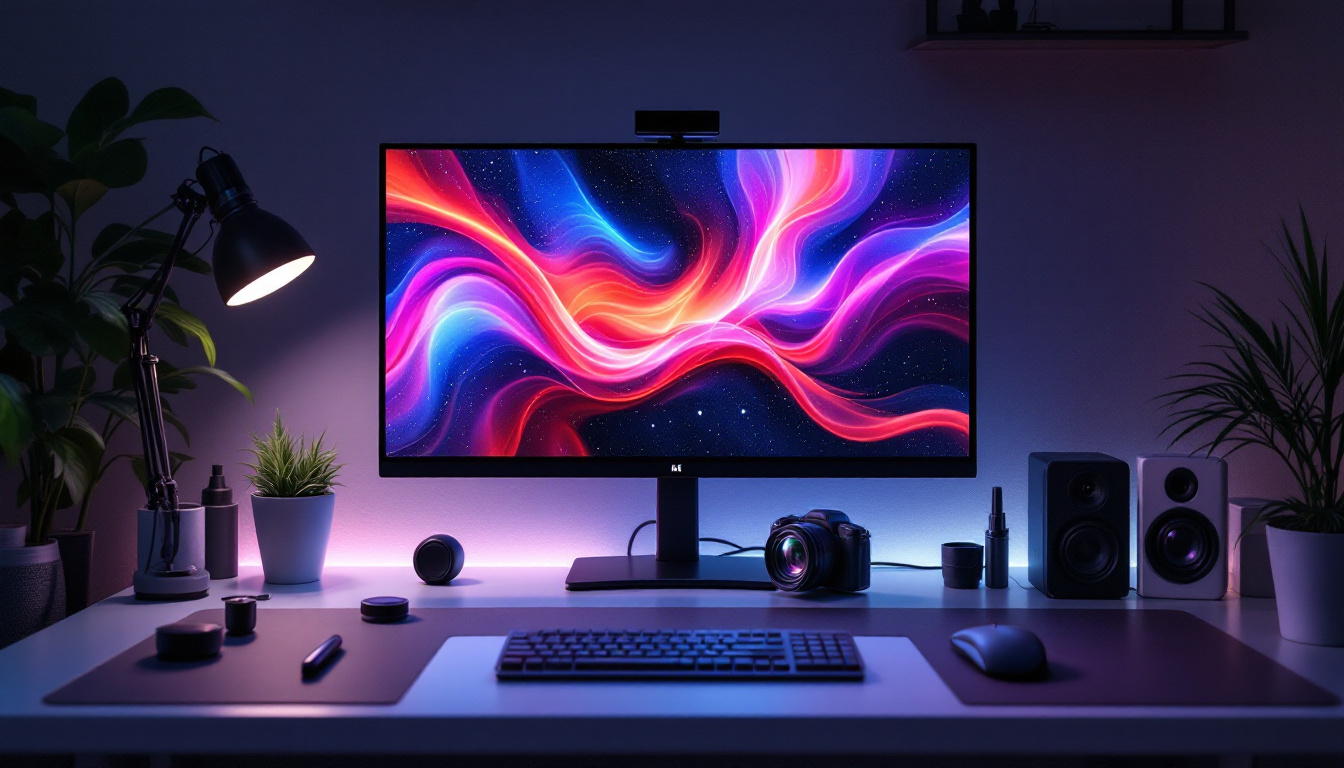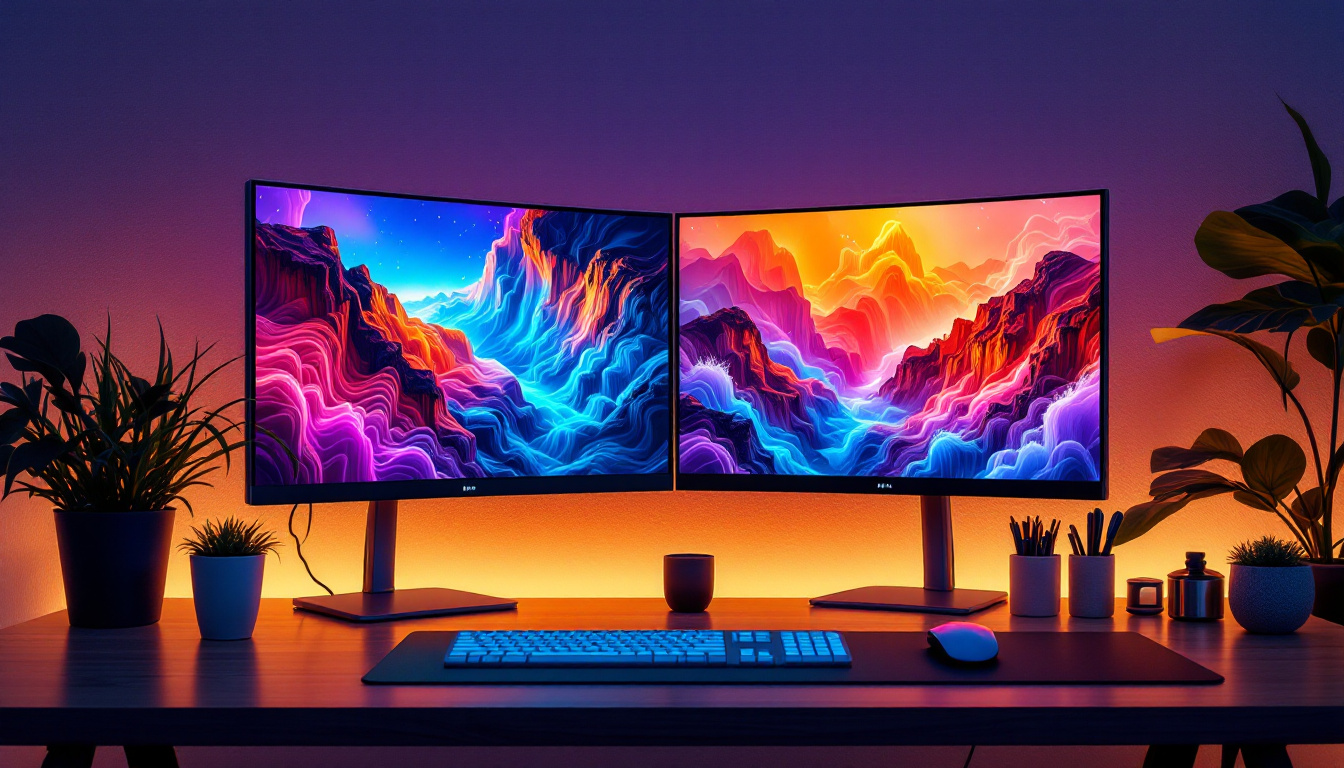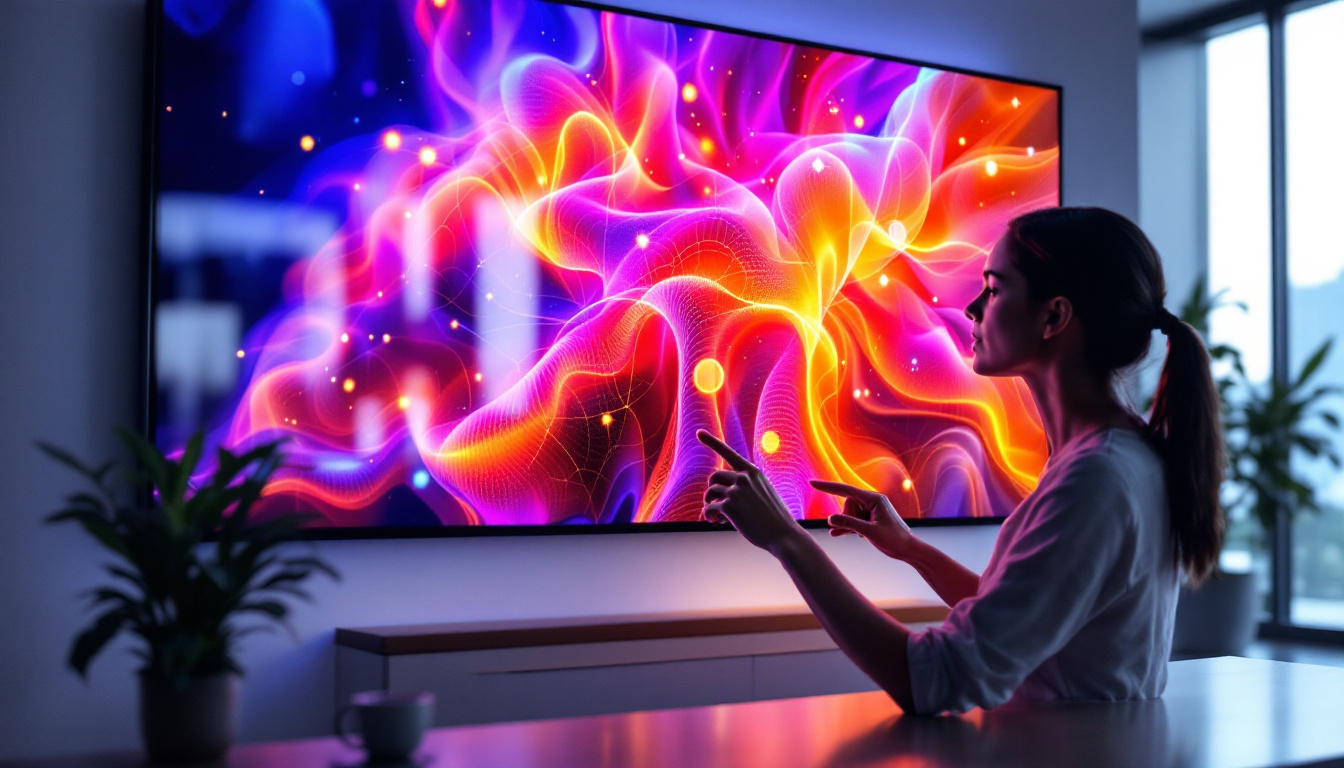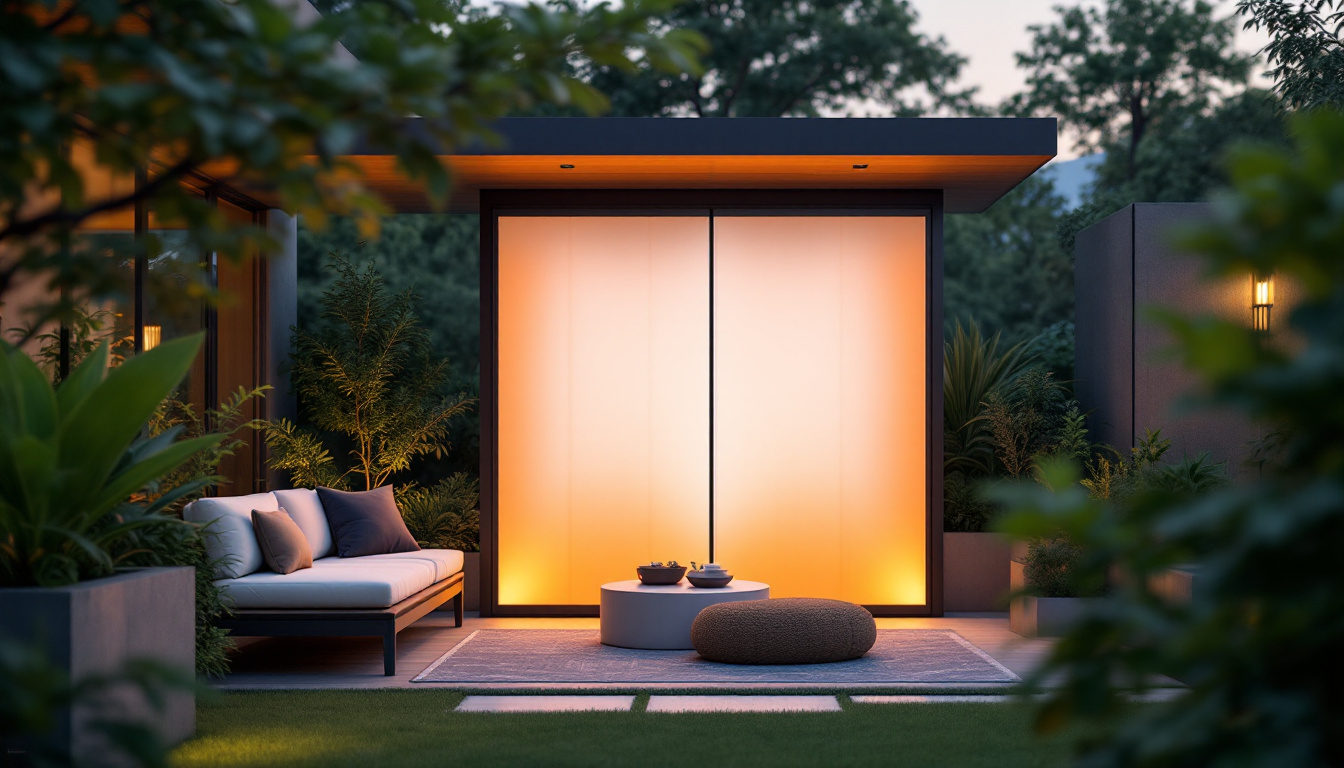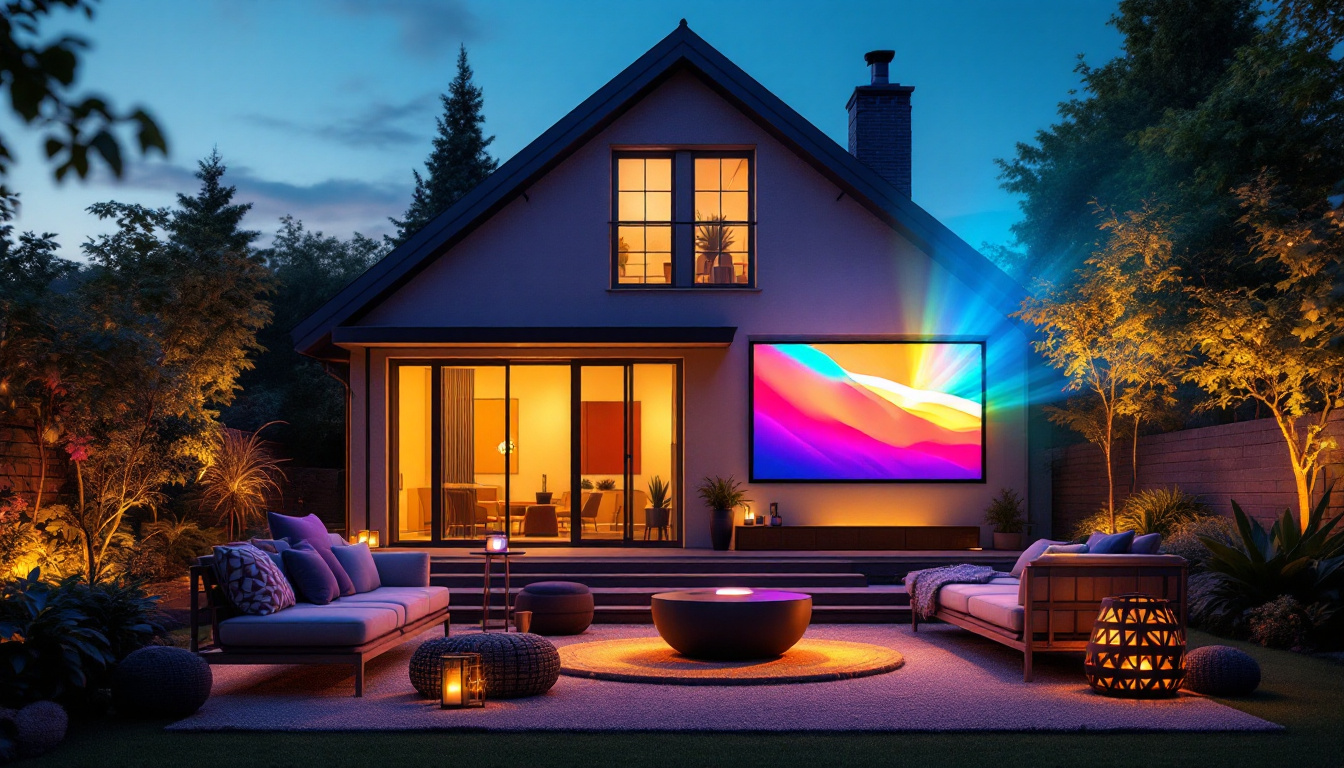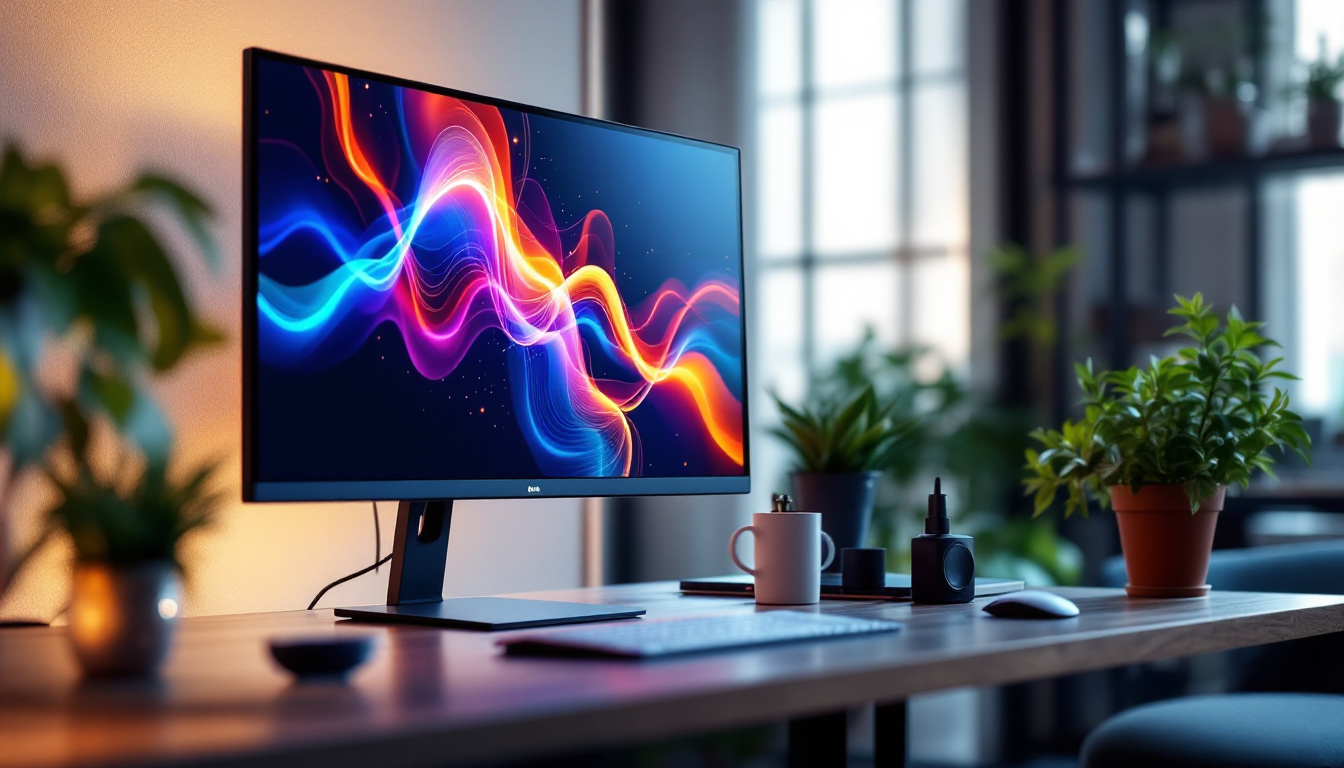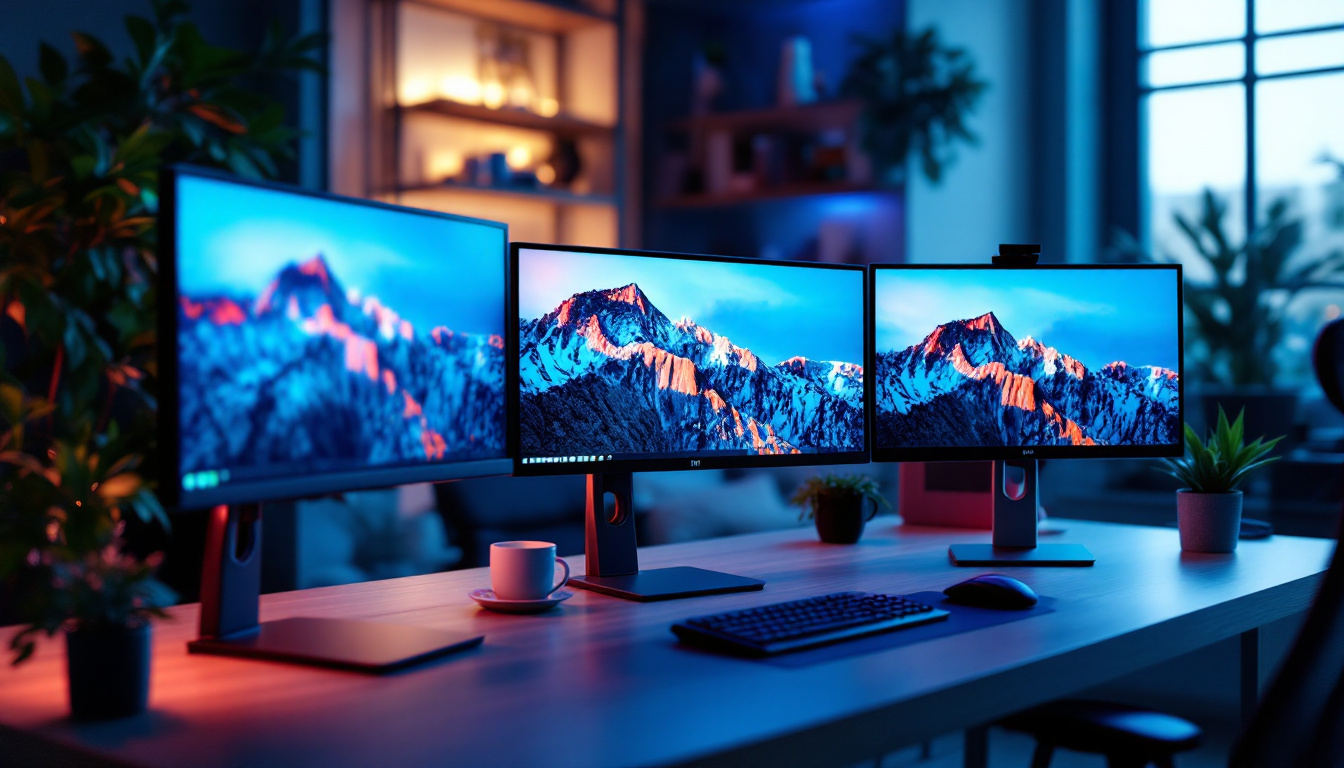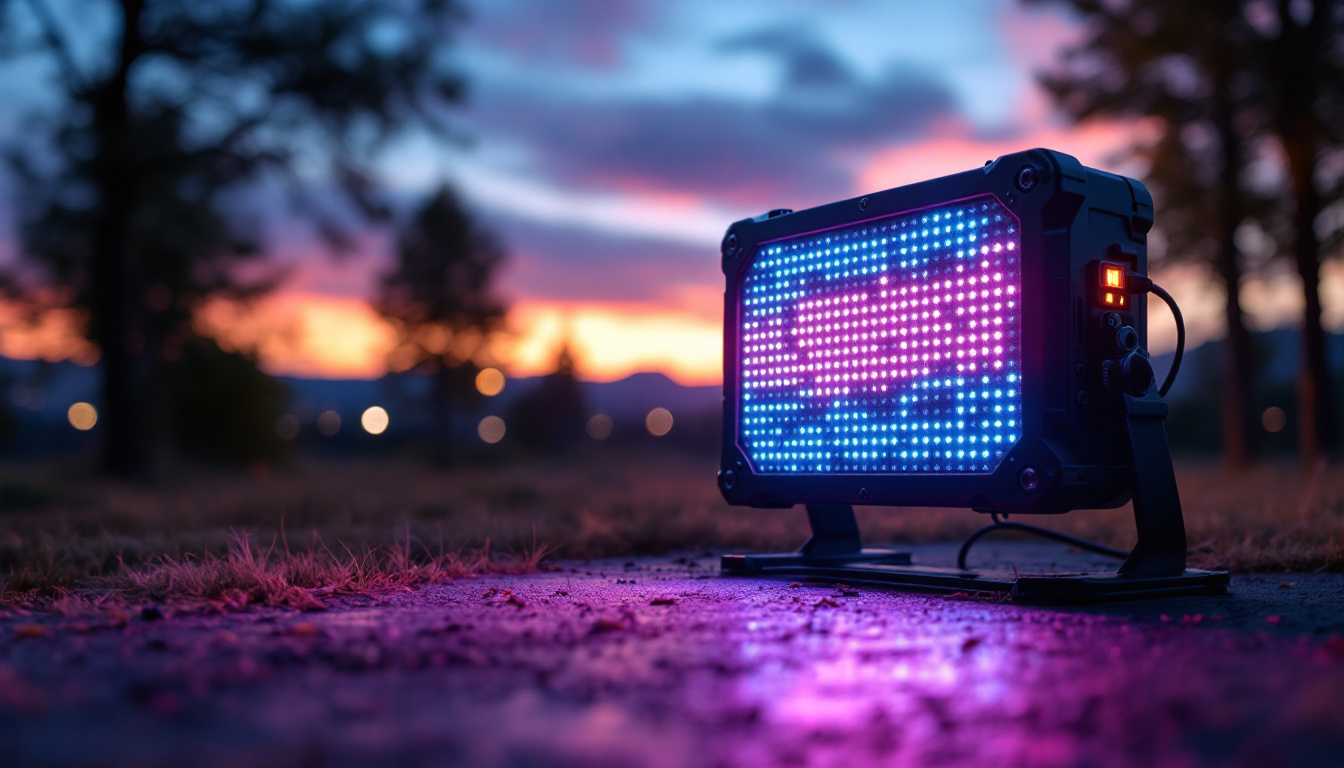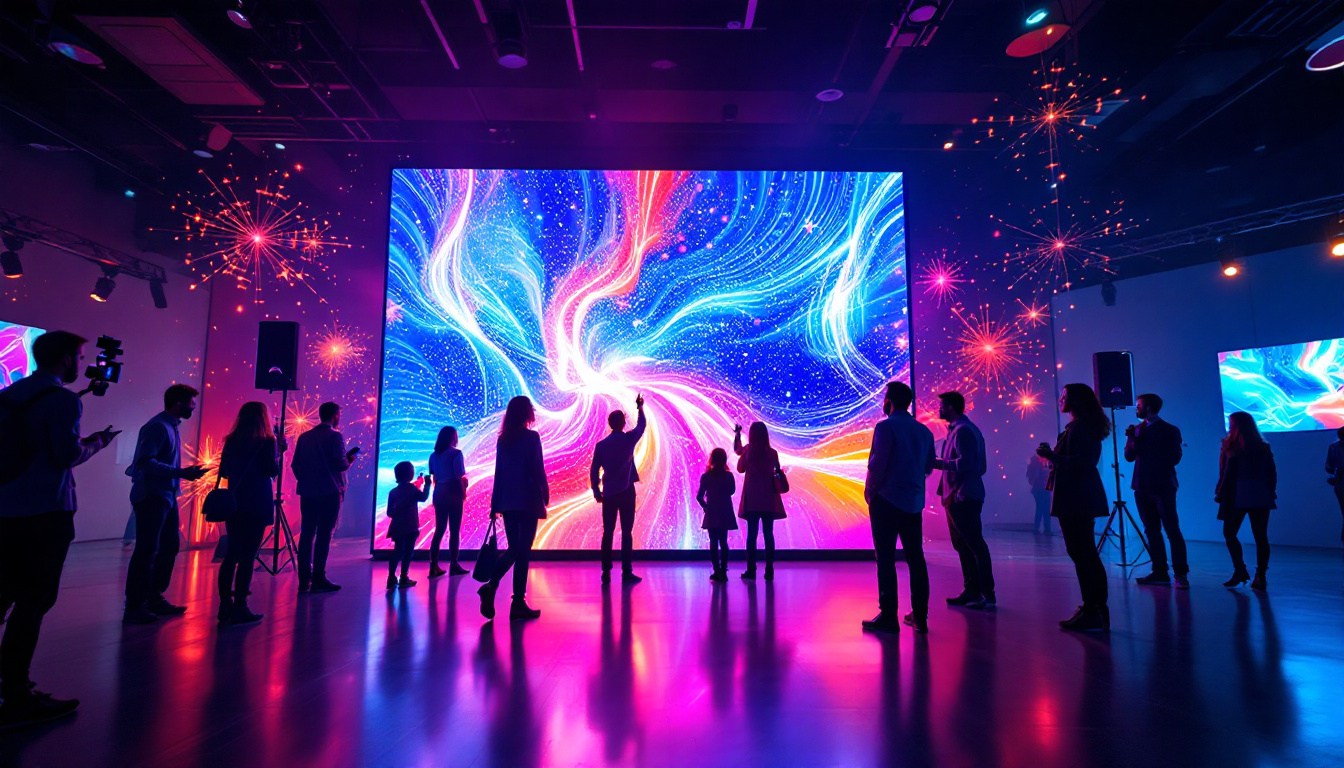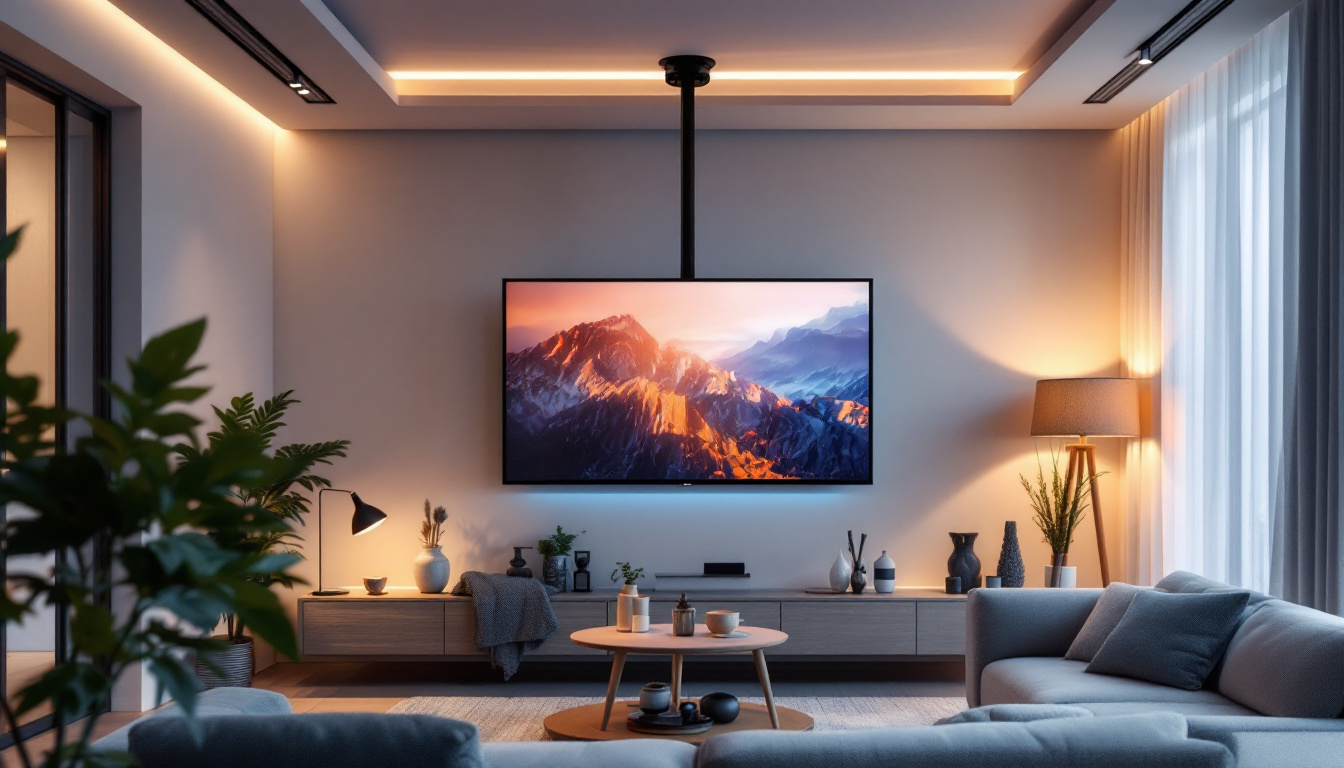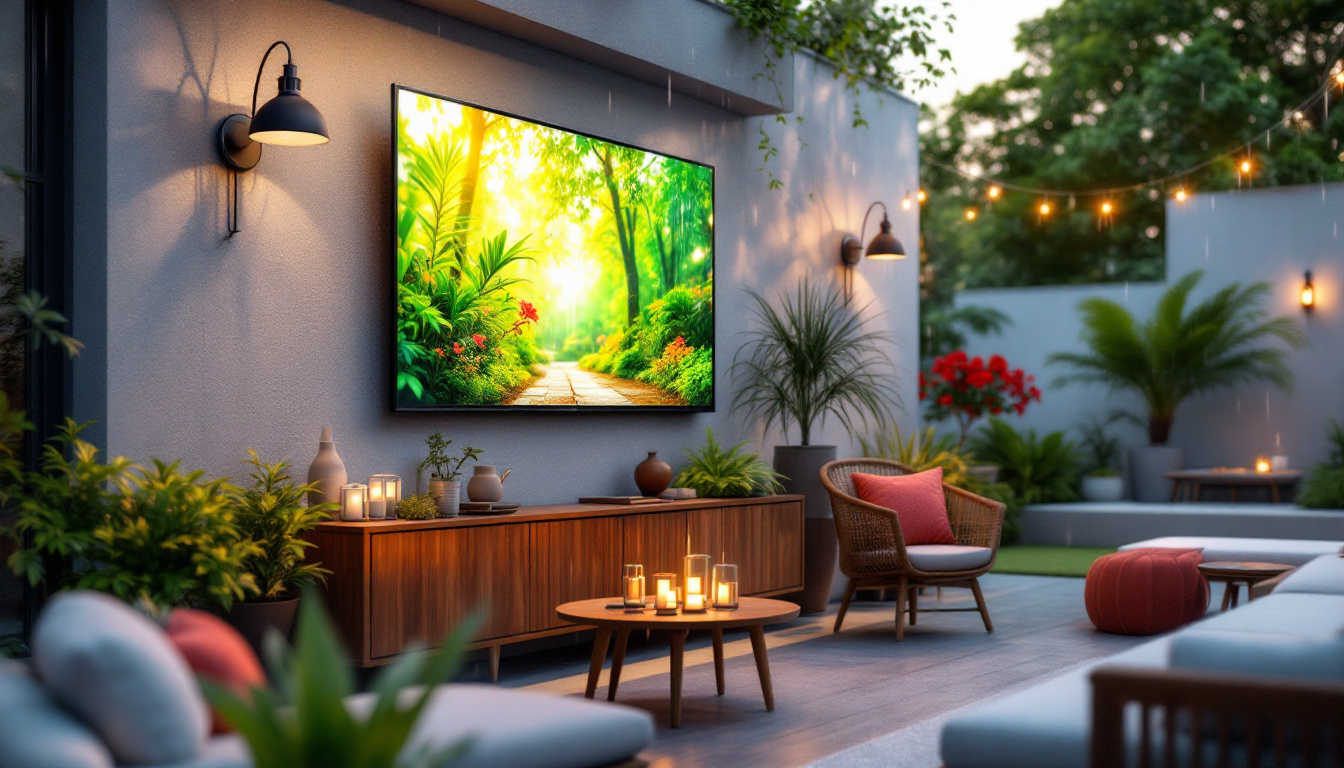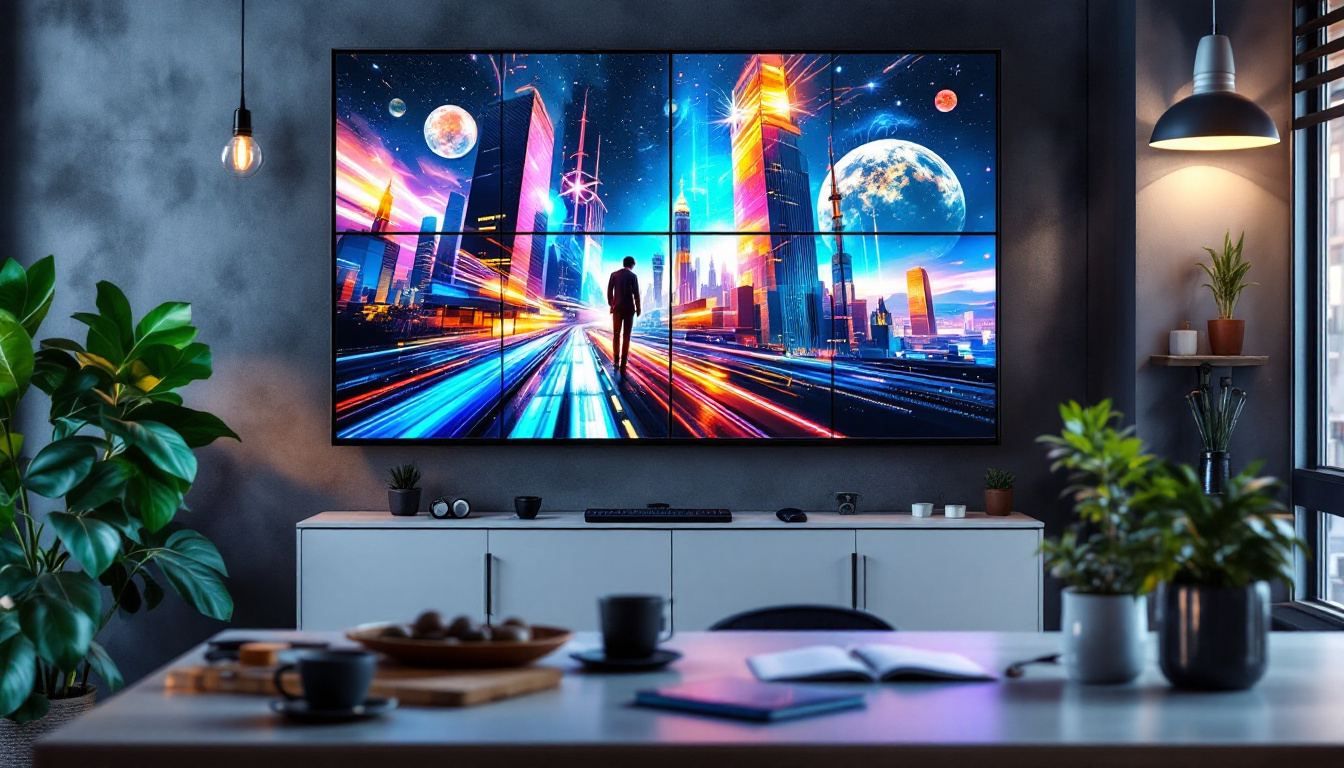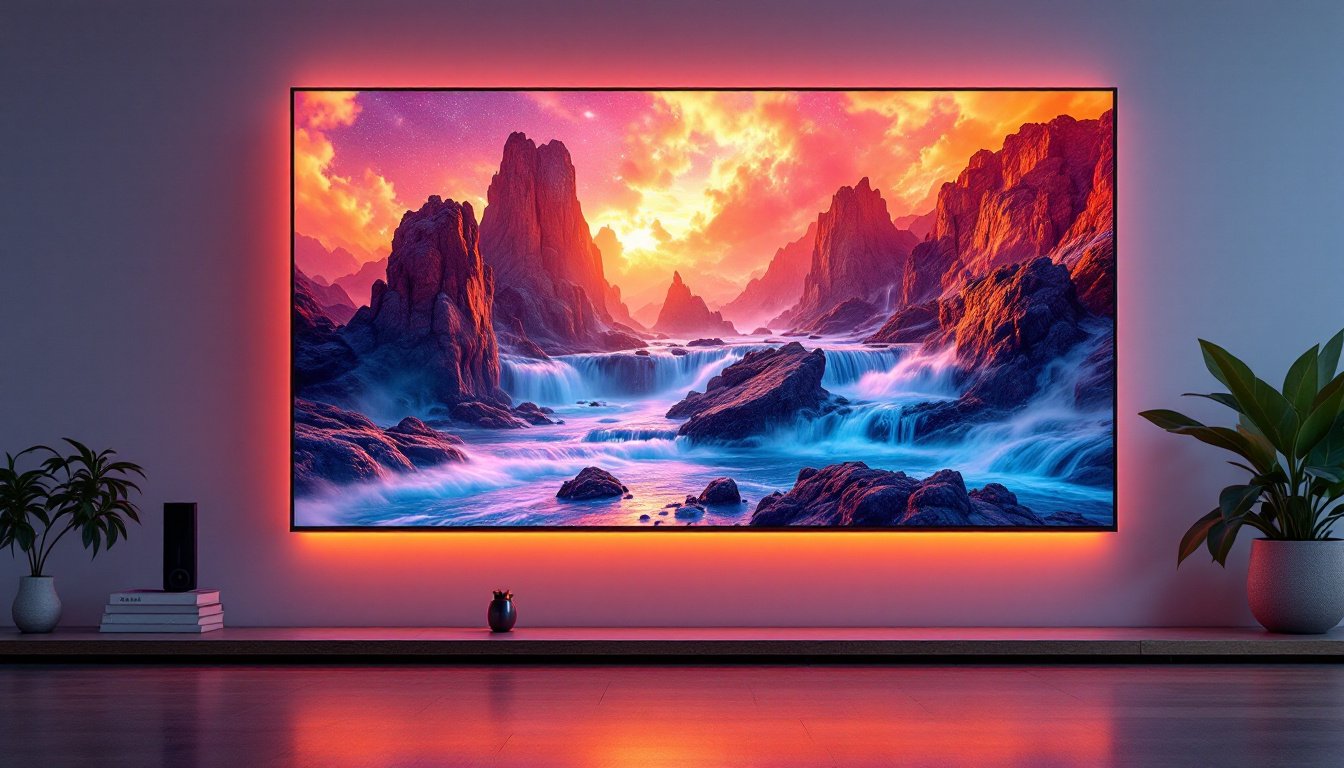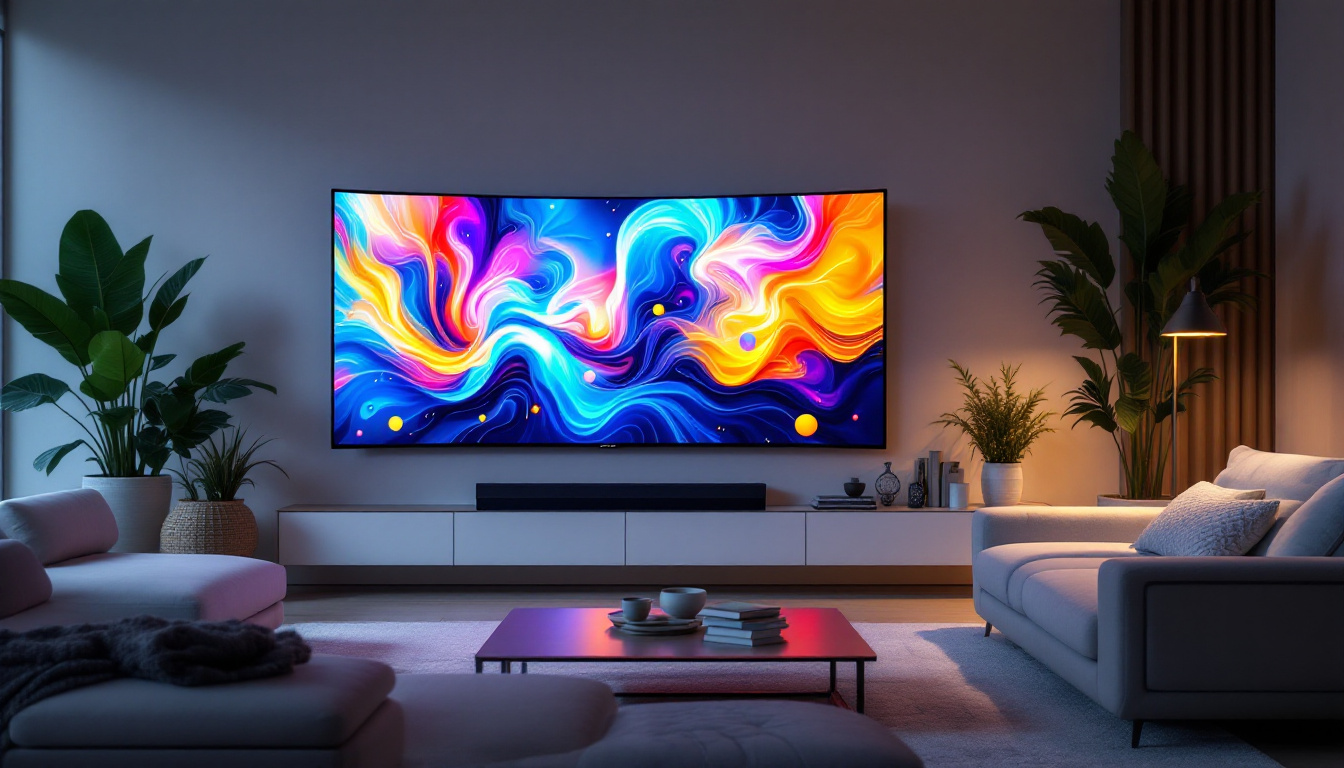In the modern digital age, the way we interact with technology has evolved significantly. One of the most notable advancements is the use of LED displays, particularly in portrait monitor setups. This configuration is becoming increasingly popular among professionals in various fields, including graphic design, video editing, and even gaming. Understanding the nuances of portrait monitor setups can enhance productivity and improve the overall user experience.
Understanding LED Displays
LED, or Light Emitting Diode, displays have revolutionized the way visual content is presented. Unlike traditional LCD screens that rely on backlighting, LED displays use tiny diodes that emit light, resulting in brighter images and better color accuracy. This advancement has not only enhanced the viewing experience for consumers but has also paved the way for innovative applications in various fields, including advertising, gaming, and even medical imaging.
Advantages of LED Technology
One of the primary advantages of LED technology is its energy efficiency. LED displays consume significantly less power compared to their LCD counterparts, making them a more environmentally friendly option. Additionally, they offer a longer lifespan, which translates to lower replacement costs over time. This durability is particularly advantageous in commercial settings, where displays are often used for extended periods, reducing the frequency of maintenance and replacement.
Furthermore, LED displays provide superior contrast ratios. This means that the difference between the darkest and lightest parts of an image is more pronounced, resulting in deeper blacks and vibrant colors. For professionals who rely on accurate color representation, such as photographers and designers, this feature is particularly beneficial. The enhanced visual fidelity allows for a more immersive experience, whether one is editing photos or watching a high-definition movie, making LED displays a preferred choice for both casual viewers and industry experts alike.
Types of LED Displays
There are various types of LED displays available in the market, each catering to different needs and preferences. The most common types include edge-lit, direct-lit, and OLED displays. Edge-lit LED displays are thinner and lighter, making them ideal for wall mounting. Direct-lit displays, on the other hand, offer better uniformity in brightness and color but tend to be bulkier. This distinction is crucial for consumers who prioritize aesthetics in their home or office environments, as the choice of display can significantly influence the overall decor.
OLED (Organic Light Emitting Diode) displays are another popular option. They provide exceptional color accuracy and contrast, as each pixel emits its own light. However, they can be more expensive and may suffer from issues like burn-in, which is a consideration for users who display static images for extended periods. Despite these drawbacks, the flexibility of OLED technology allows for curved and even foldable screens, opening up new possibilities in design and functionality. As manufacturers continue to innovate, the future of LED and OLED displays promises even more exciting advancements, including improved durability and enhanced interactive features that could redefine how we engage with visual media.
Why Choose a Portrait Monitor Setup?
Portrait monitor setups have gained traction for various reasons. This vertical orientation can be particularly advantageous for tasks that involve reading long documents, coding, or browsing through lengthy webpages. The portrait mode allows users to see more content without scrolling, which can enhance productivity.
Enhanced Workflow Efficiency
For professionals who work with text-heavy applications, a portrait monitor setup can significantly streamline workflow. Writers, editors, and programmers often find that they can view entire pages of content without the need for constant scrolling. This not only saves time but also reduces the risk of losing focus.
Additionally, portrait monitors are ideal for multitasking. Users can easily arrange multiple windows side by side, allowing for seamless transitions between tasks. This setup is particularly beneficial for those who need to reference documents while working on other projects. For instance, a researcher can have their source material open on one side while drafting their findings on the other, making it easier to synthesize information effectively.
Furthermore, the ability to stack applications vertically can also enhance the organization of one’s workspace. With a portrait monitor, users can prioritize their most important tasks at the top and keep less critical information below, creating a visual hierarchy that aids in task management. This can lead to a more structured approach to work, where distractions are minimized and focus is maximized.
Improved Visual Experience
The visual experience in a portrait monitor setup can also be enhanced. Many users report that reading on a vertically oriented screen feels more natural, mimicking the way we read books or documents. This can lead to less eye strain and a more comfortable viewing experience over extended periods.
Moreover, for graphic designers and artists, a portrait monitor can provide a fresh perspective when working on vertical designs, such as posters or social media graphics. This orientation allows for a more intuitive approach to design, enabling creators to visualize their work in the intended format. The increased vertical space can also be beneficial for editing images or videos that require a taller canvas, allowing for a more comprehensive view of the project at hand.
In addition, portrait monitors can enhance the overall aesthetic of a workspace. With their sleek design and modern functionality, they can complement contemporary office setups, creating an inviting environment that encourages creativity and productivity. The ability to adjust the height and angle of the monitor further contributes to ergonomic benefits, ensuring that users can maintain a comfortable posture while working for long hours. This attention to both form and function makes portrait monitors a compelling choice for anyone looking to optimize their workspace.
Setting Up Your Portrait Monitor
Setting up a portrait monitor may seem daunting, but with the right steps, it can be a straightforward process. Here’s a guide to help you get started.
Choosing the Right Monitor
The first step in setting up a portrait monitor is selecting the right display. Look for a monitor that supports pivot functionality, which allows the screen to rotate from landscape to portrait mode. Additionally, consider factors such as screen size, resolution, and panel type to ensure that the monitor meets your specific needs.
For those who work with high-resolution content, a 4K monitor may be worth the investment. Higher resolutions provide sharper images and allow for more detailed work, making them ideal for creative professionals.
Adjusting Display Settings
Once you have your monitor, the next step is to adjust the display settings. After physically rotating the monitor, you will need to configure the settings on your computer. Most operating systems allow users to change the orientation of the display easily.
For Windows users, navigate to the display settings by right-clicking on the desktop and selecting ‘Display settings.’ From there, you can choose the orientation option and select ‘Portrait.’ Mac users can access the display settings through ‘System Preferences’ and adjust the rotation accordingly.
Optimizing Ergonomics
Ergonomics play a crucial role in ensuring comfort during long hours of work. When setting up your portrait monitor, ensure that the top of the screen is at or slightly below eye level. This positioning helps reduce neck strain and promotes better posture.
Additionally, consider using an adjustable monitor stand or arm to achieve the ideal height and angle. A comfortable chair and proper desk setup can further enhance your workspace, making it conducive to productivity.
Common Challenges and Solutions
While portrait monitor setups offer numerous advantages, they can also present challenges. Being aware of these potential issues can help users navigate them effectively.
Compatibility Issues
One common challenge is compatibility with certain software applications. Some programs may not support portrait orientation, leading to display issues. To mitigate this, it’s essential to check the software’s compatibility before committing to a portrait setup.
In cases where software does not support portrait mode, consider using window management tools that allow for better organization of applications. These tools can help users create a more efficient workflow, even when dealing with compatibility limitations.
Screen Resolution and Scaling
Another challenge users may face is screen resolution and scaling. When switching to portrait mode, the resolution may not automatically adjust, leading to distorted images or text. To address this, users should manually adjust the scaling settings in their display preferences.
For Windows users, adjusting the scaling can be done in the same display settings menu. Mac users can find scaling options in the display preferences. Experimenting with different scaling options can help achieve the best visual experience.
Best Practices for Using Portrait Monitors
To maximize the benefits of a portrait monitor setup, consider implementing the following best practices.
Maintain a Clean Workspace
A clutter-free workspace can significantly enhance productivity. Keep the area around your monitor organized, and ensure that cables are neatly arranged to avoid distractions. A clean environment fosters focus and can lead to better work outcomes.
Regular Breaks and Eye Care
Spending long hours in front of a screen can lead to eye strain and fatigue. It’s essential to take regular breaks to rest your eyes and stretch your body. The 20-20-20 rule is a helpful guideline: every 20 minutes, look at something 20 feet away for at least 20 seconds.
Additionally, consider using blue light filters or glasses to reduce eye strain caused by prolonged screen time. These tools can help protect your vision and improve overall comfort.
Experiment with Layouts
Finally, don’t hesitate to experiment with different layouts and configurations. Each user has unique preferences and workflows, so finding the optimal arrangement for your specific tasks can lead to improved efficiency. Whether it’s adjusting window sizes or trying out different software tools, flexibility is key to maximizing productivity.
Conclusion
In conclusion, a portrait monitor setup can significantly enhance productivity and improve the overall user experience. With the advantages of LED technology, the ergonomic benefits of portrait orientation, and the right setup, professionals can create an efficient and comfortable workspace. By understanding the challenges and implementing best practices, users can fully leverage the potential of their portrait monitor setup, making it a valuable tool in their daily tasks.
As technology continues to evolve, staying informed about the latest advancements in display technology will ensure that users can make the most of their work environments. Whether for creative endeavors, coding, or general productivity, a well-configured portrait monitor setup can be a game-changer.
Discover LumenMatrix’s Advanced LED Solutions
Ready to elevate your workspace with a cutting-edge portrait monitor setup? LumenMatrix is at the forefront of LED display technology, offering a wide range of innovative solutions that can transform your professional environment. From Indoor and Outdoor LED Wall Displays to specialized options like Vehicle, Sports, and Floor LED Displays, LumenMatrix has the perfect LED solution to meet your needs. Embrace the future of visual communication with our Custom, All-in-One, and Transparent LED Displays, designed to captivate and engage. Check out LumenMatrix LED Display Solutions today and experience the unparalleled clarity and impact that only our technology can deliver.

